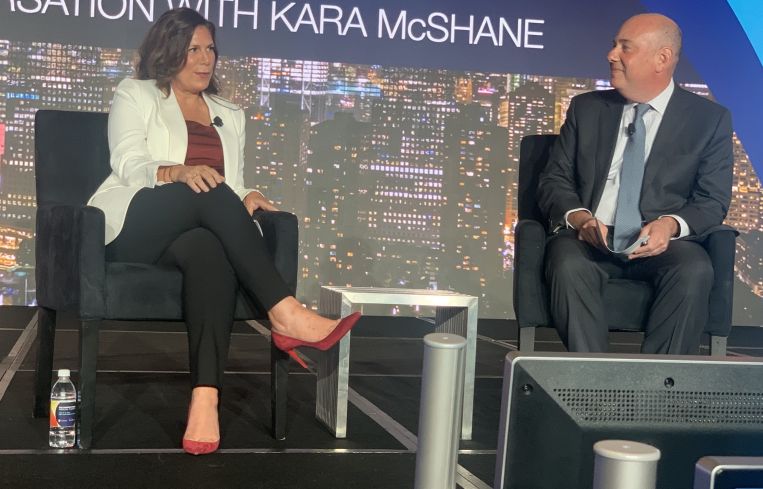CREFC NYC 2022: CRE Industry Well Positioned to Confront Headwinds
By Andrew Coen June 14, 2022 10:22 am
reprints
Amid the market volatility facing commercial real estate, Kara McShane sees signs of optimism for the rest of 2022.
During the opening session of the CRE Finance Council’s Annual Conference at the New York Marriott Marquis, the head of commercial real estate at Wells Fargo said that there is still plenty of capital available to deploy despite widening credit spreads and rising cap rates. During the discussion, moderated by Michael Lascher, global head of real estate debt capital markets at Blackstone, McShane also stressed that CRE finance professionals are better positioned for a possible near-term recession than during past economic downturns due to disciplined lending.
“We have been fairly disciplined as an industry for the last decade or so in terms of leverage,” said McShane, who helped spearhead a record $84.8 billion in lending volume in 2021 and was ranked No. 1 in Commercial Observer’s annual Power Finance 50 list released last month.
McShane took over the reins of Wells Fargo’s CRE business on Valentine’s Day 2020 just a month before the start of the COVID-19 pandemic forced her to get acclimated to her new role while working remotely. While work-from-home trends that took hold during the pandemic are a concern for Class B office properties, McShane is bullish about newer Class A assets that attract top tenants and believes occupancy levels will eventually climb back.
“I have a lot of concern about inefficient Class B/commodity office requiring substantial cap ex, just like probably everyone in this room does,” she said. “Alternatively, I feel good about well-located new trophy, Class A green buildings with attractive amenities that are having an easier time attracting tenants”
While industrial and multifamily have seen big climbs in valuation during the pandemic, McShane said she is optimistic both of these high performing sectors will remain strong because of their ability to drive cash flow — while noting not all of these assets are “created equal.” McShane is also bullish on alternative asset classes like self-storage and data centers where rents can quickly be reset to offset inflation costs.
Wells Fargo’s heavy transaction activity last year included its highest commercial mortgage-backed securities volume in the bank’s history, which was highlighted by a $3 billion, fixed-rate, single-asset single-borrower (SASB) deal for 1 Vanderbilt. This large-scale transaction for the new Midtown Manhattan office tower marked the largest SASB financing ever.
The CMBS market is a far different story this year, however, with borrowers shifting from capital markets to balance sheets due to spread widening. She said floating-rate loans are in far more demand in the current environment.
“There are a lot of business plans that need to be executed, and borrowers really want the prepay flexibility that floating-rate loans provide,” she said.
Andrew Coen can be reached at acoen@commercialobserver.com.



